In die SICP Journal 153 (May, 2002), fellow member John Caroll bemoaned that very little information is known about the postal rates in force in the Republic of South Vietnam from 1949 through 1975. Twelve years later, little aditional information has been published. The reason for this is that the postal tariff in Indochina/South Vietnam was rather byzantine.
Postal rates were determined by means of transportation (surface or air), by weight (in 5 gram steps for airmail) and by destination. Also there were rates for ordinary letters, various printed matters, post cards and packages. South Vietam is truly a paradise for cover collectors as it offers a very large number of different franking options that can be documented.
Attached is a partial representation of the letter tariff that the author believes was effective on March 1, 1962 (Exhibit 1). Here one can nicely see how the tariff is generally set up; though questions of interpretation still remain. We basically learn that the „ordinary“ postage for surface letters up to 20 grams was 3 Piastres, going up to 4 Piastres for 50g and 6 Piastres for a 100 grams. It appears that the surface rate was the same for Vietnam (Category A in the tariff), Laos, Cambodia and France/French Union countries (Category B in the tariff). It is interesting that many years after independence there was still a colonial component in the postal tariff!
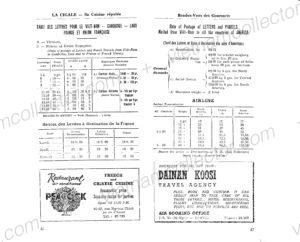
Air Mail within Vietnam and abroad was a lot more costly and was charged at 5 gram intervals. A standard 20 gram letter within Vietnam hence cost 5 Piastres, to Laos and Cambodia 8 Piastres and to France/French Union Countries 20 Piastres.
What makes no sense to the author ist the „Aerial Surtax“ that is quoted in the general remarks section of the tariff at 5 Piastres (for every 5 grams) for Category A and 4 Piastres for Category B. Was this an additional levy that was added to the aforementioned rates, and, if yes, why was it less for a letter to Category B countries than within Vietnam? Any member insight in how these general remarks are to be interpreted are highly appreciated.
Exhibit 2 the tariff for letters and small sealed packages, shows postal rates to various destinations. The exact date of publication is unknown to the author but it must have been released after the March 1962 tariff, probably in 1964. Witness that the airmail rates for Vietnam are identical up to a weight of 20 grams but are higher for letters of 25 grams or more. Also the 20 gram letter rate to France is now 41 Piastres instead of 20 Piastres. Here France clearly has lost its special status and is treated the same way as other foreign destinations (i.e., New Zealand). This exhibit is interesting as it provides a complete geographical definition of the South Vietnamese postal rate structure. A total of 15 different geographical zones are defined. The most expensive regions were South Africa, East Africa and South America. Not many letters to these destinations have survived and hence they are valued much higher than more common destinations in Europe.
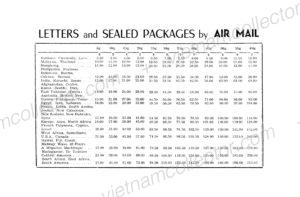
The additional charge for registered letters was set at 4.50 Piastres. Unfortunately, no information is provided on the surcharge for Express Mail; but based on the authors large stock of South Vietnamese postal history, the surcharge appeares to have been 5 Piastres in 1962 going up 9 Piastres in 1964.
The author’s ultimate goal is to compile a spreadsheet representing rates for at least the most basic forms of mail (i.e. ordinary letter, post cards and printed matter) along with basic surcharges (air mail, registration, express) for the defined destinations from 1949 until 1975. In order to do so, though, additional tariff information is necessary. The author is in posession of some tariff information for letters (March 1973) and printed matter (July 1974). Thank you to fellow member Frank Duering for providing them! These will be presented in greater detail in a future write-up. Other time periods are still unclear as one can only go by the postage affixed to commercial mail over time and with these the weight of the letter is mostly unknown, making it difficult to decide if additional postage was due to a tariff change or simply due to additional weight. Only additional printed tariff information can provide certainty. So, if you have postal tariffs from the Republic of South Vietnam, other than the ones mentioned in this article) please forward a scan copy to the author. All information thus received will be shared with the membership in future write-ups.

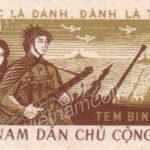
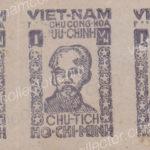
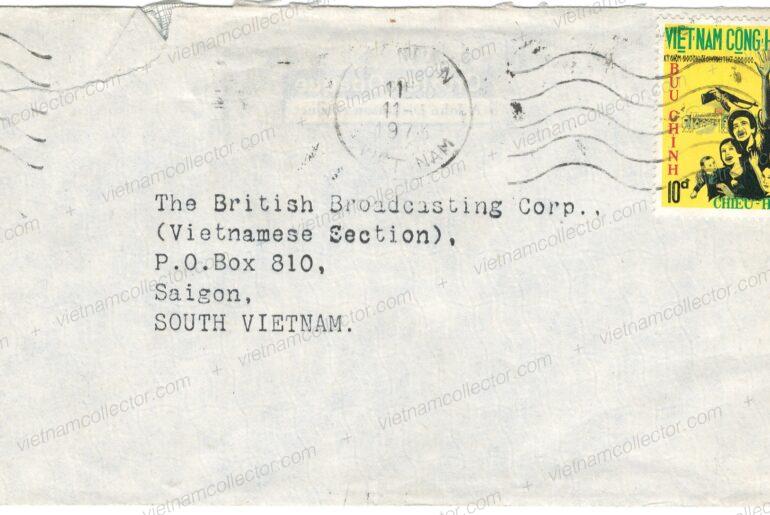
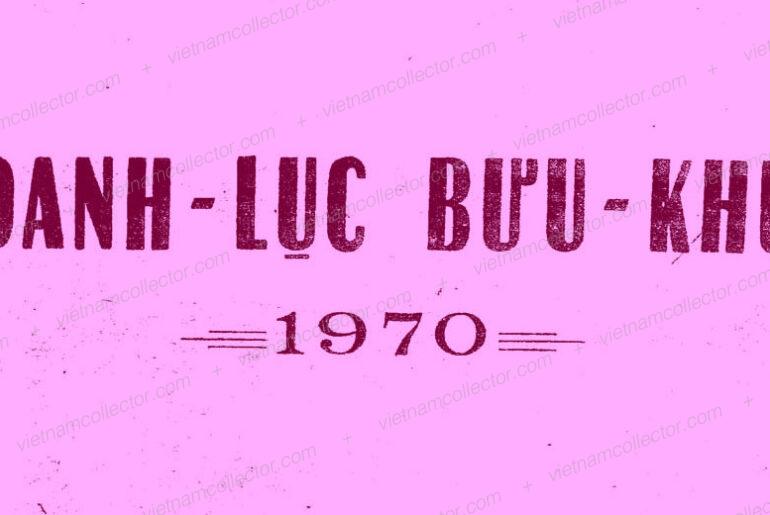
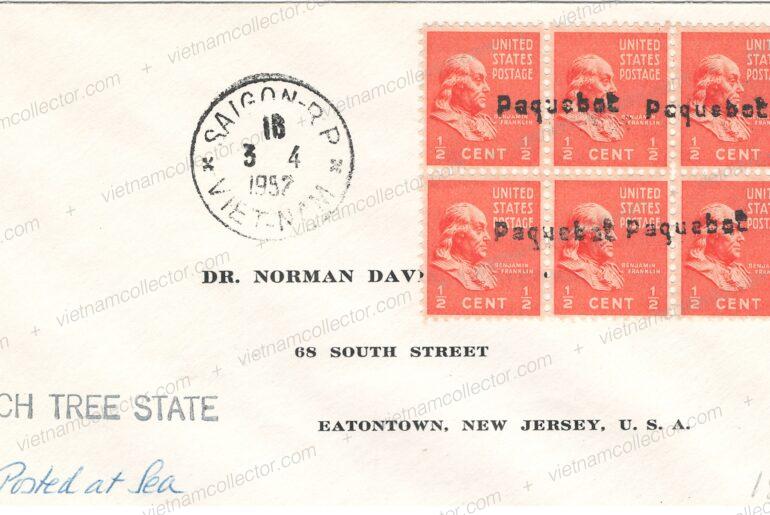
Comments are closed.